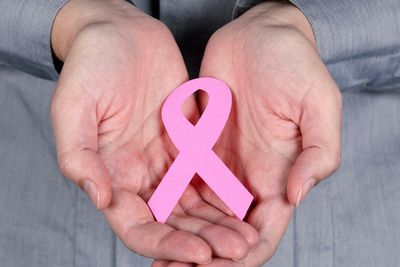October is the month I inevitably think about getting older (yes, I'm a Libra baby), and the month that surrounds us not only in glorious fall foliage colors but a color particular to a disease: breast cancer.
So many things have changed since my own breast cancer diagnosis in 1988. One thing that hasn't changed is the rate at which breast cancer is diagnosed in U.S. women younger than 35 (I was 34 at the time of my diagnosis). That has remained stable at around 2.4 percent for the past 20 years.
Today, about one in eight U.S. women—just over 12 percent—will develop invasive breast cancer over the course of her lifetime. The good news is that rates in the United States began decreasing in 2000, after increasing for the previous two decades.
The bad news? Even though death rates have been decreasing since 1989—with larger decreases in women under 50—over 39,000 U.S. women were expected to die in 2013 from the disease.
And like the seasons, facts are always changing. It can be tough to keep up. Here are some current breast cancer facts from BreastCancer.org:
- Breast cancer rates for women in the United States are higher than those for any other cancer, and the death rate from breast cancer is second only to lung cancer.
- White women are slightly more likely to develop breast cancer than African-American women. Yet, overall, African-American women are more likely to die of it because the tumors are usually found at a later and more advanced stage when there are fewer treatment options.
- Asian, Hispanic and Native-American women have a lower risk of both developing and dying from breast cancer.
- Your risk of breast cancer is almost double if you have a first-degree relative (mother, sister or daughter) who has been diagnosed. About 15 percent of women who get breast cancer have a family member diagnosed with it.
- About 85 percent of breast cancers appear in women who have no family history of the disease, due to genetic mutations (not inherited mutations) that occur as a result of aging and life in general.
- Inherited gene mutations are linked to about 5 percent to 10 percent of breast cancers. Most common are mutations of the BRCA1 and BRCA2 genes inherited from your mother or father.
- Your risk of being diagnosed with breast cancer (and having it recur after treatment) are higher if you're overweight or obese, compared to women who maintain a healthy weight. This is true especially after menopause.
- Regular moderate or intense exercise four to seven hours per week has been shown by research to lower your risk of breast cancer.
- Other links to possible breast cancer risk include exposure to chemicals in foods (including cured and barbecued meats), water and plastic.
- There are things you can do to help prevent breast cancer. Tune in next week to find out what they are.
More important reading:
Questions to Ask at Your Breast Exam
Sex after Breast Surgery
Overcoming the Fear of Breast Cancer


